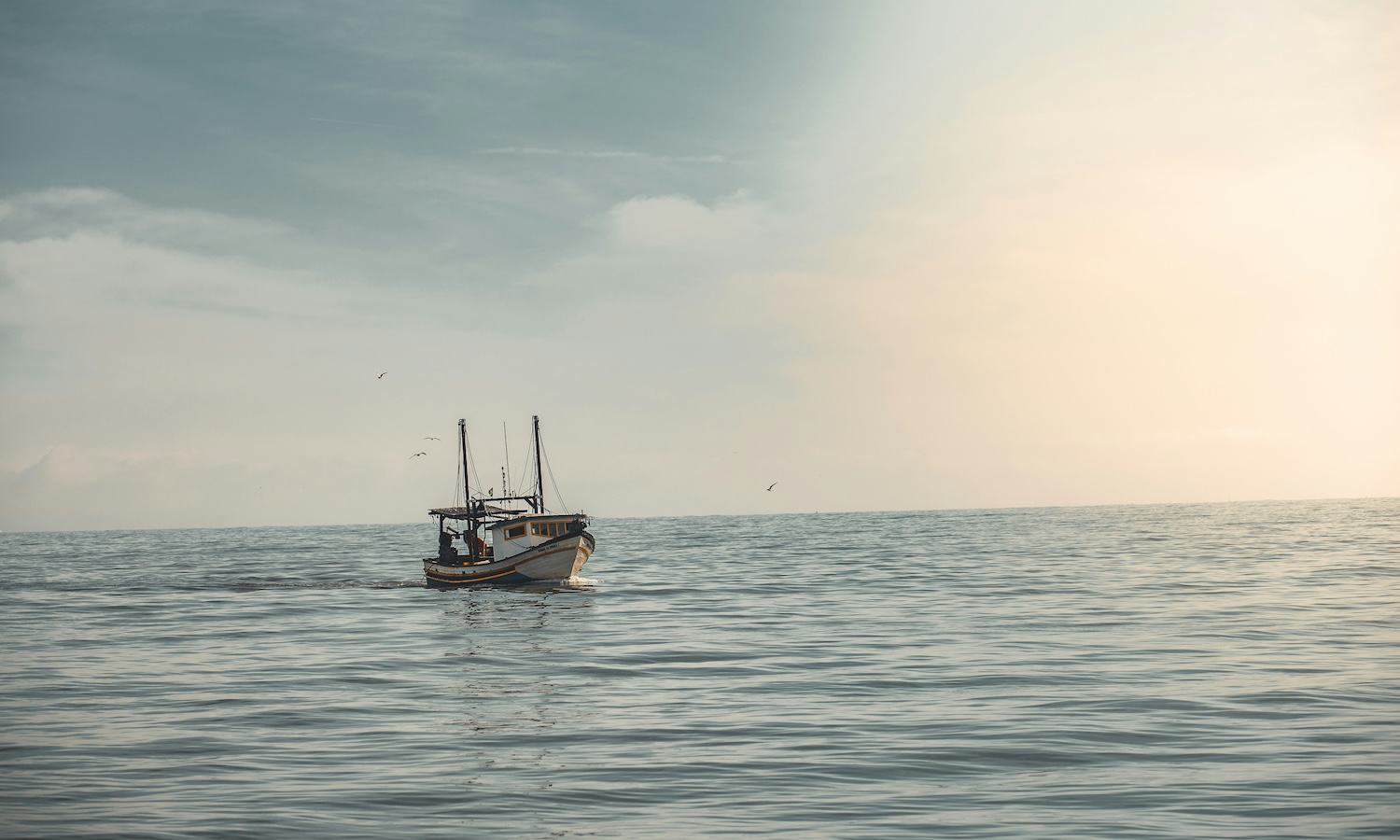A recent study published in Nature reveals that untracked fishing vessels are far more prominent in the world’s oceans than previously thought. Study authors have made the dataset publicly available, increasing widespread access to marine vessel activity that could be used to protect global oceans.
“We now have a good understanding of how much human activity is not being monitored publicly and where hotspots of this ‘dark’ activity are across the ocean,” Fernando Paolo, Senior Machine Learning Engineer at Global Fishing Watch and study co-author, tells Food Tank.
Using satellite imagery, GPS technology, and automatic identification systems (AIS) the researchers tracked and identified what they call “dark fishing vessels.” AIS publicly broadcasts vessel coordinates, identities, owners, and activities. But regulations for AIS vary by country and in many cases vessels do not have these systems, they can be turned off or manipulated and in some areas they do not have signal to broadcast.
Paolo shares that the scale of mapping involved in this study was not previously possible due to technical limitations. The researchers analyzed data from 2017-2021, identifying fishing vessels through satellite imagery and comparing these results to AIS data to determine if they were publicly tracked.
“We knew that previous assessments based on AIS data were potentially missing a substantial amount of activity,” Paolo tells Food Tank, “But we didn’t know how much or where. When we found out that about three quarters of the fishing vessels and about one quarter of other vessels are not publicly tracked, we were truly surprised.”
In addition to revealing the extent of dark fishing vessels, researchers have made the data from this study widely available, greatly expanding the accessibility of data on fishing vessels. Previously, according to the study, data on fishing vessels was either not publicly available or difficult to monitor due not only to the limitations of AIS, but because data is often proprietary, restricted by national governments, or divided among several often outdated or incomplete datasets.
“A key message of our work is that we will increase transparency on what humans are doing in the ocean by democratizing access to data and technology, allowing for better management of this shared resource,” Paolo says.
Researchers prepared a detailed map and public dataset of fishing activity that can now be accessed through Global Fishing Watch. Paolo tells Food Tank that he hopes this open access creates a new trend for data on vessel activity at sea and that there are many uses for this activity monitoring.
“We hope our study findings will lead to more nations sharing their private data on industrial activities within their national waters,” Paolo says. “We are working with our policy team as well as local authorities to adapt our technology for specific needs, all the way from quantifying greenhouse gas emissions from maritime industrial activities to monitoring illegal, unreported and unregulated fishing in specific areas.”
Marine Protected Areas (MPAs) were among the regions observed as part of the study. In the Great Barrier Reef MPA, for example, researchers found that there are, on average, more than 20 dark fishing vessels traveling through the area per week.
But Paolo notes that dark fishing vessels are not necessarily engaged in illegal activity.
“We found many vessels not publicly tracked inside several MPAs. These vessels could be passing by without actually fishing,” Paolo says. “Now local authorities can determine how to use our data to better understand vessel activity in those areas.”
A spokesperson from the Great Barrier Reef Marine Park Authority tells Food Tank that while all fishing vessels in the Marine Park must be tracked, this data is not made publicly available and therefore would not have been reflected in AIS data.
“The Reef Authority is confident, through our dedicated vessel monitoring team and our multi-agency surveillance program conducted with compliance partners—Maritime Border Command, Queensland Parks & Wildlife Service, Queensland Police Service, Queensland Boating and Fisheries Patrol, and Traditional Owner ranger programs—that commercial fishers are displaying very high levels of compliance with fishing rules,” The spokesperson says. “Importantly, there are currently no instances of illegal foreign fishing occurring within the Marine Park.”
In the Great Barrier Reef Marine Park, different activity is permitted in certain areas; in about one third of the Marine National Park fishing and collecting are not allowed without a permit.
“The Marine Park is widely recognized as one of the best managed marine-protected areas in the world,” the spokesperson tells Food Tank “Its management involves ensuring environmental protection while allowing national, state and community interests in sustainable use.”
Articles like the one you just read are made possible through the generosity of Food Tank members. Can we please count on you to be part of our growing movement? Become a member today by clicking here.
Photo courtesy of Guilherme Stecanella, Unsplash










